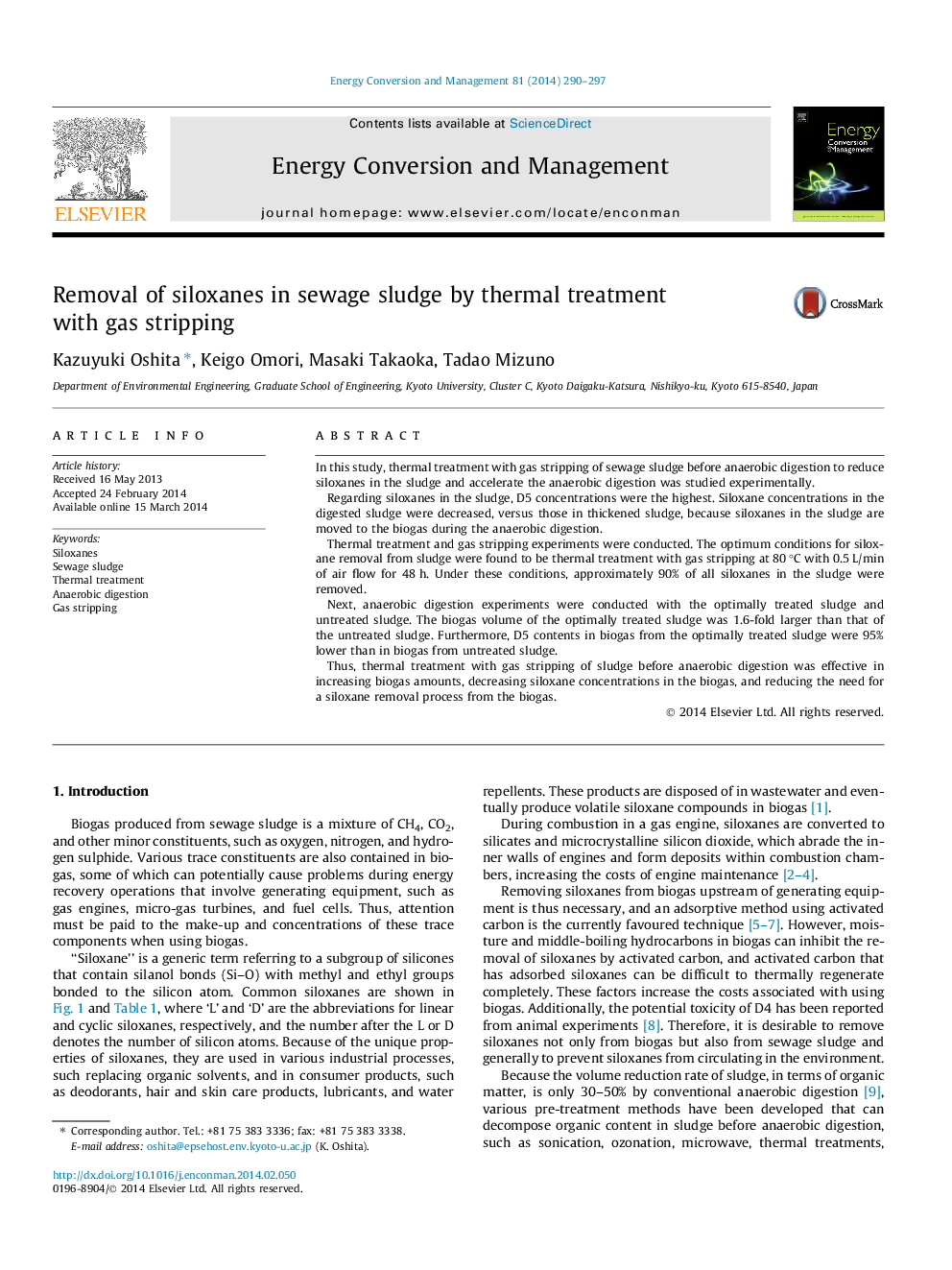| Article ID | Journal | Published Year | Pages | File Type |
|---|---|---|---|---|
| 764003 | Energy Conversion and Management | 2014 | 8 Pages |
•A new treatment of sewage sludge were studied to reduce siloxanes in biogas.•D5 of cyclic siloxane concentrations were the highest in sewage sludge.•Under optimal conditions, most of siloxanes in the sludge were removed previously.•By this treatment, CH4 was 1.6-fold larger and siloxane in biogas 95% lower.
In this study, thermal treatment with gas stripping of sewage sludge before anaerobic digestion to reduce siloxanes in the sludge and accelerate the anaerobic digestion was studied experimentally.Regarding siloxanes in the sludge, D5 concentrations were the highest. Siloxane concentrations in the digested sludge were decreased, versus those in thickened sludge, because siloxanes in the sludge are moved to the biogas during the anaerobic digestion.Thermal treatment and gas stripping experiments were conducted. The optimum conditions for siloxane removal from sludge were found to be thermal treatment with gas stripping at 80 °C with 0.5 L/min of air flow for 48 h. Under these conditions, approximately 90% of all siloxanes in the sludge were removed.Next, anaerobic digestion experiments were conducted with the optimally treated sludge and untreated sludge. The biogas volume of the optimally treated sludge was 1.6-fold larger than that of the untreated sludge. Furthermore, D5 contents in biogas from the optimally treated sludge were 95% lower than in biogas from untreated sludge.Thus, thermal treatment with gas stripping of sludge before anaerobic digestion was effective in increasing biogas amounts, decreasing siloxane concentrations in the biogas, and reducing the need for a siloxane removal process from the biogas.
